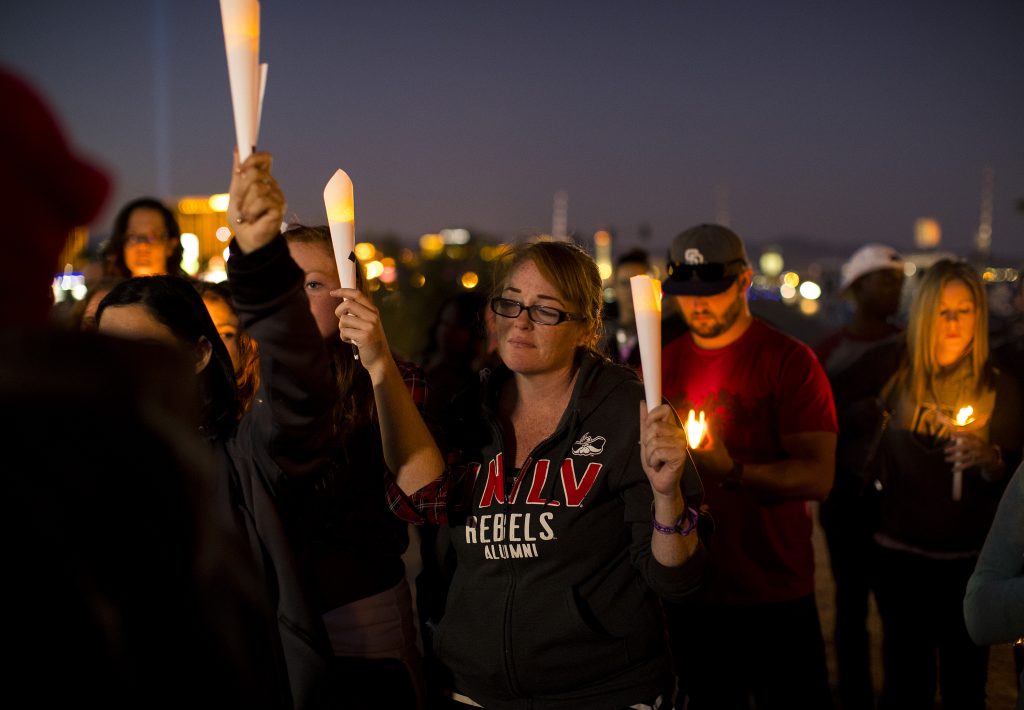
On Oct. 1, the deadliest mass shooting in the United States since 1949 left 58 people dead and more than 500 injured at the Las Vegas Harvest music festival. Multiple headlines assumed that he was mentally distraught, or that he didn’t “fit the mass shooter profile.”
What is the standard used to define a mass shooter? Media outlets have tried to rewrite the narrative on what is considered “terrorism.” Stephen Paddock was immediately characterized as a “lone wolf.” If he had been of another race, or a minority group, would he have been called such?
Stephen Paddock committed an act of terrorism. Domestic terrorism is defined by the U.S. federal code as “activities that appear intended to affect the conduct of government by mass destruction,” and this was such. Yet, he will not be called a terrorist by law enforcement.
In 2017, there were 273 mass shootings, and 11,671 deaths as a result of gun violence. Gun violence has been a leading cause of death among Americans, and yet white male shooters have still never been called terrorists. Because Paddock was a white American, his whiteness has afforded him the ability to be labeled as less of a threat than individuals of minority groups. Before investigations even began, multiple media outlets had already come to the conclusion that he had acted alone, without even conferring that his private devices at home were searched, or that his family was contacted about his motives.
There is a clear double standard in portrayals of mass shootings by media outlets. The headlines after the killing of three Muslim UNC Chapel Hill students in 2015 are symptomatic of the larger problem of media narratives disregarding the experiences of minorities and victimizing the perpetrators. The crime, perpetrated by a white shooter, was labeled a parking dispute. The words “hate crime” were avoided. This, in turn, has perpetuated stereotypes that have protected white shooters who have been partially freed of blame although they must be held as accountable as any other individual.
The Washington Post, only 12 hours after Paddock shot and killed multiple people, wrote that he “liked to gamble, listened to country music, lived a quiet retired life.” An article by The New York Times was titled, “Who Was Stephen Paddock? The Mystery of a Nondescript ‘Numbers Guy.’” An ABC News headline reads, “Friend of Vegas shooter Stephen Paddock describes him as caring person who sought to ‘make people happy.” In stark contrast, Trayvon Martin, Tamir Rice and Michael Brown, all victims who were people of color, were in one way or another held accountable for their own deaths by the media. The narrative that media outlets adhered to portaying these individuals as criminals, in having cigarettes and wearing hoodies, or acting “badly.” They were not victimized, but rather systematically criminalized for their decisions to do drugs or wear certain clothing that has been stereotyped.
In telling news stories, many media outlets have chosen to frame the narrative that normalizes white male shooters, propagating bias even by writing the headline that called Stephen Paddock mentally distraught before reaching conclusive facts about his mental health. Media outlets are quick to characterize Muslim suspects as terrorists, and African Americans as “thugs.” A Muslim suspect will be tied to extremist terrorist organizations, and the entire religion and its followers are at once vilified and subject to a systematic violence perpetuated by racism that denigrates people of color and favors white individuals.
When Dylan Roof shot nine African Americans at a historically Black church in Charleston, South Carolina, he was not regarded as a “terrorist.” Media outlets were hesitant to declare Dylan Roof, a white male, a terrorist, but quick to cling to the idea of him being mentally ill. Thus, a man who intentionally walked into a church, and killed nine innocent civilians, was humanized by the media. Even as a murderer, he was afforded his white privilege and his actions were justified by the media narrative that could elicit sympathy, in calling him mentally ill, rather than what he truly was — a dangerous and volatile white supremacist acting out of hateful intentions.
It has been speculated that Stephen Paddock had a severe mental illness which remained undiagnosed. The violent and unforgivable acts of shooting hundreds of innocent people cannot be protected or shielded by the cover of “mental illness.” Even if he had a mental illness, this does not dispute the fact that those with actual mental illnesses have been characterized as violent, due to negative stereotypes being formed because of the media’s insistence on sticking to this narrative. When the media claims that murderers are mentally ill without any conclusive evidence, this misrepresents those who actually have mental illnesses.
Stephen Paddock is a mass murderer, and the impact of his actions that cut too many lives short should in no way be lessened. The perpetrator should never be protected, and the way the media frames narratives should not adhere to such a double standard.

